Choosing fish to settle in your first aquarium is an important task for the novice aquarist, requiring a lot of responsibility. The huge variety of species available on the market will captivate anyone. But it is important to remember that many types of fish require specific conditions of detention, which a beginner is not always able to create.
Guppy
The first place in our list is deservedly taken by a small fish – a guppy. For the vast majority of amateurs, this species was the first to be kept, and the experience of caring for guppies became a pass to the big world of aquaristics.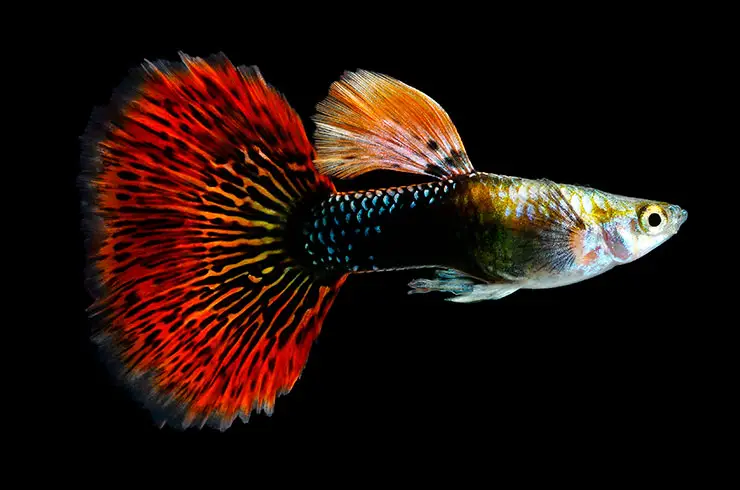
Guppies are distinguished by a huge variety of colors and are able to survive in almost any volume, but it is best to keep a flock of 6-10 individuals in aquariums from 50 liters with dense thickets of plants. The fish are peaceful and great for shared aquariums; it is not recommended to settle guppies only with species that can bite off the fins of other fish so that the males do not lose their main advantage – the veil tail.
Guppies are viviparous fish, which means that after spawning, an already formed fry is born, capable of self-feeding. Therefore, breeding these fish will not cause any difficulties, because the process can take place without any intervention right in the general aquarium. The choice of food for guppies is also not difficult; live, frozen, and high-quality dry food can be included in the diet of these fish.
Danio rerio
In the aquarium, it prefers to stay near the surface of the water. The fish is schooling, so at least 6 individuals must be kept. The minimum volume of the aquarium is from 30 liters, preferably elongated, since the zebrafish is a very mobile fish and it needs space for swimming. Despite the high activity, the fish are extremely calm in nature and are not able to offend anyone. It will also be helpful to plant live plants in a zebrafish tank.
The fish is spawning, but the spawning technology is not very complicated, and it is quite within the power of a novice aquarist.
In addition to the “standard” striped coloration, there are leopard-patterned color varieties and genetically modified zebrafish from the GLO series. They are picky about feeding; dry food in the form of flakes floating on the surface of the water is perfect for them.
Swordsman
Swordsmen are great fish for beginners. These are relatively large representatives of the viviparous group. Individual specimens in the aquarium can grow up to 8-10 cm. A characteristic feature of the “classic” shape is the presence of a xiphoid process on the caudal fin. Currently, a large number of breeding farms have been bred, differing both in color and in body shape.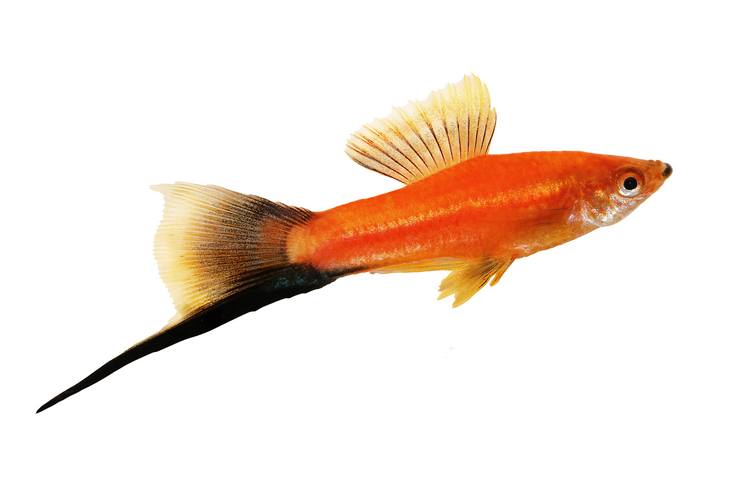
An aquarium from 50 liters with a lid is suitable for keeping since swordtails are very jumpy fish. It is best to keep the fish in small “harems” – there should be 2-3 females for one male. Otherwise, males may clash with each other. It is desirable to plant live plants in the aquarium.
In general, swordtails are peace-loving fish and are compatible with most species, but sometimes quite cocky individuals are found.
Reproduction is not difficult, since the fish is viviparous and already formed fry are born.
Molliesia
Another viviparous fish on our list. The fish are relatively large, females can grow up to 10 cm, males are slightly smaller. The most popular are mollies with a completely black body coloration.
But breeders have developed a large number of color variations. Also, many people fell in love with sailing mollies (velifer mollies) – a fast-moving fish with a highly developed dorsal fin. However, she can often show aggression towards neighbors.
Like other fish tooth viviparous, mollies are best kept in aquariums from 50 liters with a predominance of males. Live plants and natural driftwood will be the best decorations. They prefer warm water of medium hardness.
Mollies will be good neighbors for many fish. Only a few individuals sometimes show aggression in the general aquarium.
Reproduction is simple and often spontaneous. The fry is fully formed after birth and is able to feed independently.
Ancistrus
“Sticky catfish” – it is under this name that ancistrus are known to many novice aquarists. These fish have a modified oral apparatus, which has turned into a kind of “suction cup” that allows the catfish to stay on any, including vertical, surface. Also, thanks to him, ancistrus is able to scrape off algal growths – the main source of its food. This helps to keep the aquarium glass and decorations clean, so ancistrus are very useful aquarium fish for beginners.
The maximum size is 10-12 cm. The body is dark gray with white spots. There are forms with veil fins and completely white coloration.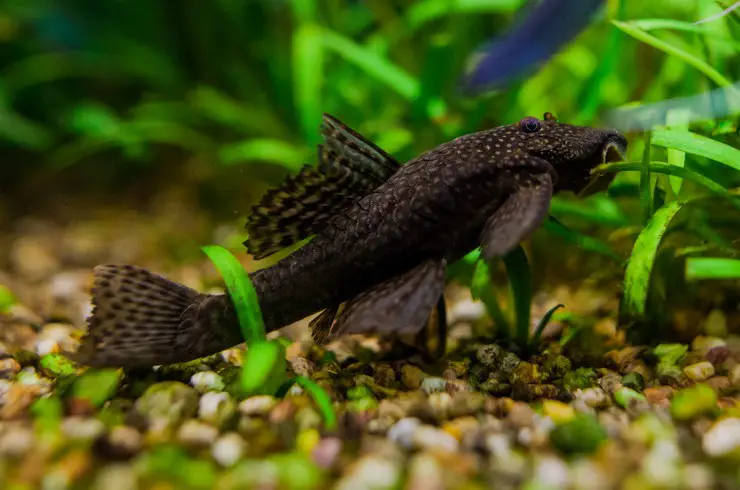
Suitable for keeping in almost any tropical aquarium with a volume of 50 liters or more. The obligatory design requirements are the presence of natural driftwood, which the ancistrus like to scrape off, getting the cellulose necessary for digestion.
Sometimes it can damage live plants. Compatible with most fish species. With a male and female in the aquarium, spontaneous spawning is often observed.
Tertia
Easy to maintain and care for, this fish is an excellent choice for novice aquarists. The fish grows up to 3-4 cm, has a silvery body with three dark transverse stripes.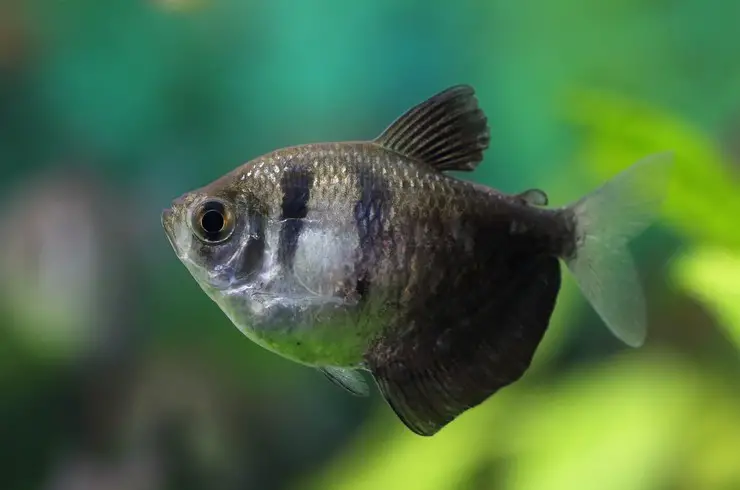
There are veil and albino forms. Recently, genetically modified GloFish thorns, which have a very bright fluorescent color, have become very popular.
For maintenance, an aquarium with a volume of 40 liters or more is required. Thoracic is a schooling fish, it is better if the number of individuals is at least 6 pieces. It is necessary to provide areas with thickets of plants and free swimming.
There will also be no problems with feeding the thorns – they perfectly eat any kind of food, preferring to feed near the surface and in the middle layers of the water.
Reproduction is a little more difficult than in previous species, but breeding is quite possible with a little theoretical training.
Cockerel
For the intolerance of males to each other, the cockerel is also called “fighting fish”. It belongs to the group of labyrinth fish. Cockerels have a special respiratory organ – a labyrinth, which allows the use of atmospheric air for breathing, for this the fish must periodically float to the surface. Thanks to this feature, males are able to live in small aquariums without forced aeration.
The average size of the fish is 5-6 cm. Pronounced gender dimorphism is characteristic: females are smaller and do not have such a gorgeous tail. Through the efforts of breeders, more than 70 breeds of cockerels were bred, differing in color and shape of fins.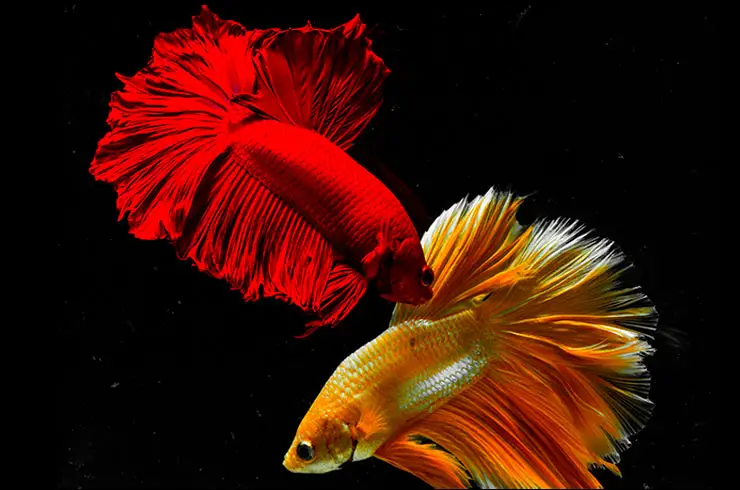
You can keep a cockerel in aquariums from 7 liters, but the most optimal will be a container with a volume of 20 liters or more. Aeration is not required in the aquarium, but a filter is best installed. It is important that the air temperature above the water surface is not too cold, otherwise, the fish can damage the labyrinth organ.
The breeding process is not difficult and extremely interesting. The male makes a nest of bubbles, where he puts the eggs after spawning and looks after them until the fry appear.
Speckled corridor
Corridors are very popular aquarium catfish. The fish are extremely peaceful, have interesting behavior, and very well clean the bottom of the aquarium from the remains of food, for which the corridors have received the love and recognition of millions of aquarists.
Males in the aquarium grow up to 4-6 cm, females are slightly larger – up to 7 cm. The body is painted in a gray-olive color with a lot of dark spots. The abdomen has a slight pinkish-gold tint.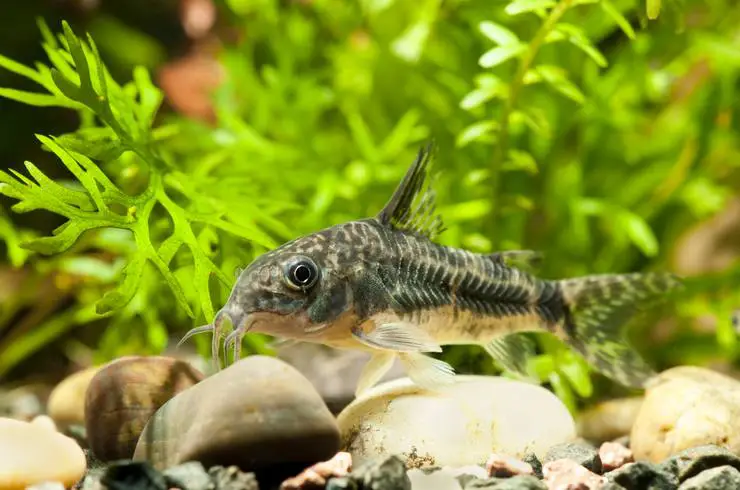
Speckled corridors are schooling fish, it is best to have a flock of 4-6 individuals in the aquarium. The minimum volume for a couple of fish is 30 liters. It is important that the ground does not have any sharp edges, because the corridors can damage their sensitive tendrils near the mouth. Catfish are very fond of swarming in the ground and swimming in dense thickets of plants.
Can be kept with most ornamental fish species. Corridors spawn, but after a little practice, their reproduction will not be difficult.
Sumatran Barbus
The Sumatran barb is a peaceful schooling fish with a very attractive coloration. In an aquarium, it grows up to 7 cm. The body is silvery, with four transverse stripes. Fins with a red border especially pronounced in males.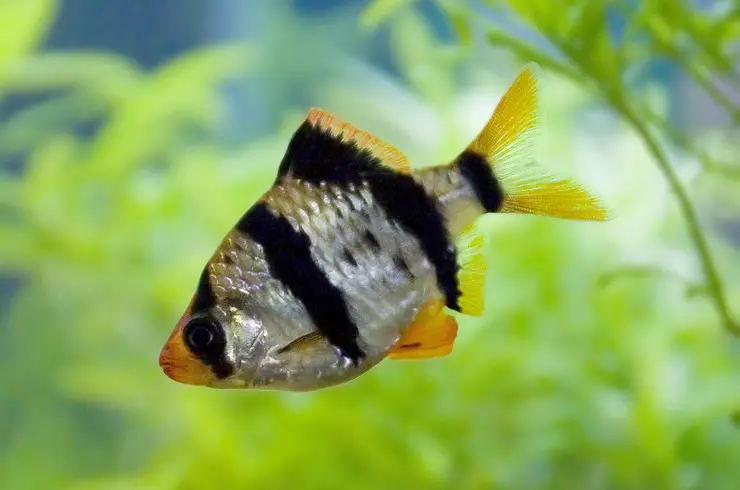
It is necessary to keep fish in flocks of 6 or more. If there are fewer barbs, then there may be aggression towards the neighbors in the aquarium. It is best if the aquarium has a volume of at least 50 liters and is elongated in length since Sumatran barbs are quite mobile and require space. Barbs look especially impressive in aquariums with live plants.
They are able to get along with many other species, the only exceptions are slow fishes with veil fins, which can become the object of aggression for barbs, and large fins can be damaged by them.
For breeding, you will have to organize a separate spawning aquarium. Reproduction has its own nuances, but it is not difficult, and even a beginner will succeed with a little skill.
Gourami marble
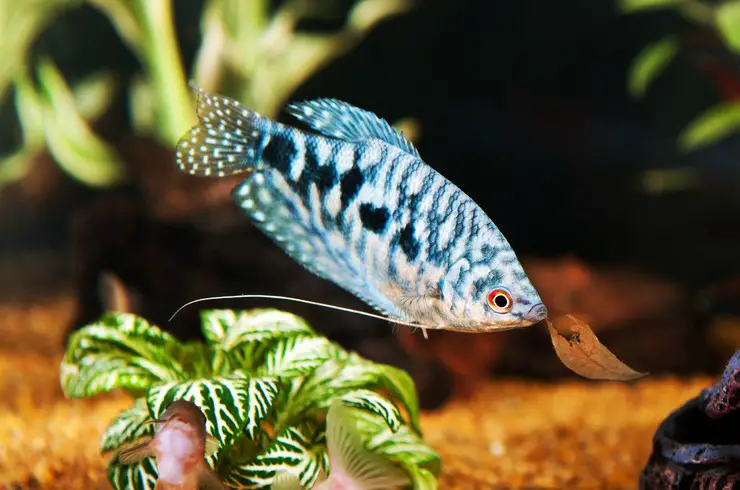
Gourami marble grows up to 10-13 cm. Given the large size of the fish, it will need an aquarium of 80 liters or more. Aeration, as for other labyrinths, is not necessary, but good filtration will have a beneficial effect on the well-being of gourami.
It is best to keep fish in pairs or in small groups with a predominance of females. Species that are close in size and temperament will become good neighbors for gourami. They are unpretentious in food and perfectly eat any kind of feed. Can do a good job by killing hydras, planarians, and snails in the aquarium.
Reproduction of marbled gourami usually does not cause problems for beginners. Gender dimorphism is well expressed, so it will not be difficult to select a pair. Like the cockerel, the male gourami builds a nest from bubbles, saliva, and aquatic plants, and then takes care of the eggs.
I would like to draw your attention to the fact that the high endurance of fish is not at all a reason for an irresponsible attitude to their content. Aquarium fish, like any other pets, need to create the most comfortable conditions for life and development. At the same time, even the most unpretentious species require compliance with certain care measures, such as regular water changes, etc. In response to a good attitude, your pets will delight their eyes with beauty for a long time and radiate health.

